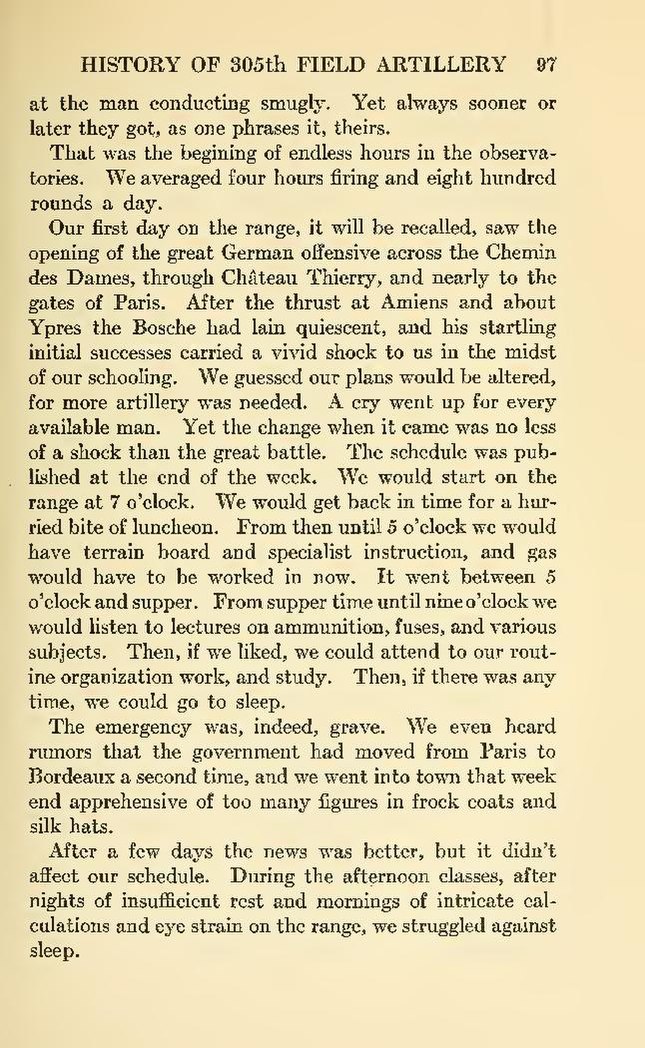at the man conducting smugly. Yet always sooner or later they got, as one phrases it, theirs.
That was the beginning of endless hours in the observatories. We averaged four hours firing and eight hundred rounds a day.
Our first day on the range, it will be recalled, saw the opening of the great German offensive across the Chemin des Dames, through Château Thierry, and nearly to the gates of Paris. After the thrust at Amiens and about Ypres the Bosche had lain quiescent, and his startling initial successes carried a vivid shock to us in the midst of our schooling. We guessed our plans would be altered, for more artillery was needed. A cry went up for every available man. Yet the change when it came was no less of a shock than the great battle. The schedule was published at the end of the week. We would start on the range at 7 o'clock. We would get back in time for a hurried bite of luncheon. From then up til 5 o'clock we would have terrain board and specialist instruction, and gas would have to be worked in now. It went between 5 o'clock and supper. From supper time until nine o'clock we would listen to lectures on ammunition, fuses, and various subjects. Then, if we liked, we could attend to our routine organization work, and study. Then, if there was any time, we could go to sleep.
The emergency was, indeed, grave. We even heard rumors that the government had moved from Paris to Bordeaux a second time, and we went into town that week end apprehensive of too many figures in frock coats and silk hats.
After a few days the news was better, but it didn't affect our schedule. During the afternoon classes, after nights of insufficient rest and mornings of intricate calculations and eye strain on the range, we struggled against sleep.
